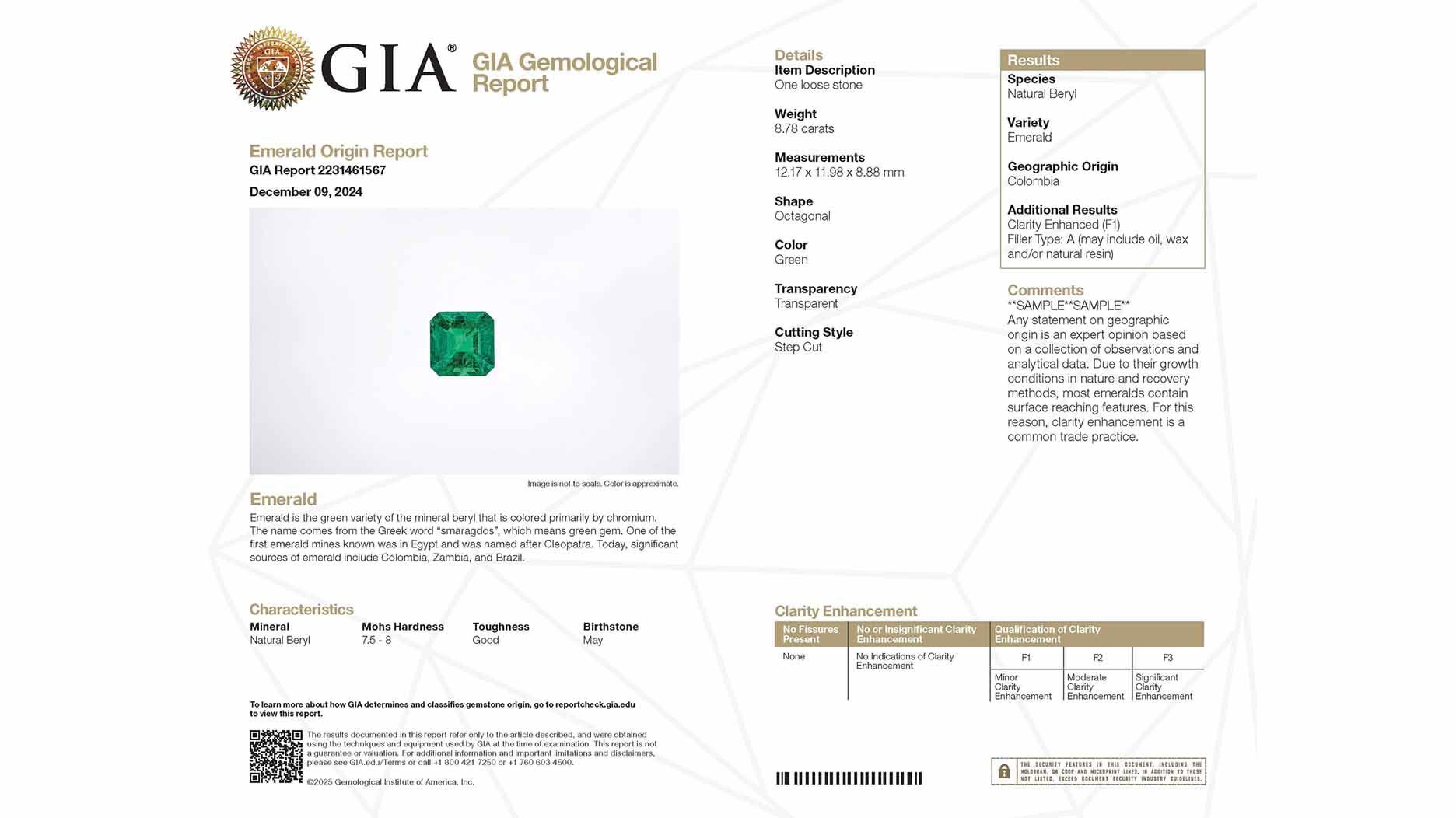GIA To Include Traceability Info on Some Cultured Pearl Reports
The lab will include reference numbers on reports for cultured pearls that contain bead nuclei embedded with an RFID tag.

Fukui Shell Nucleus Factory, a Hong Kong-based pearl nucleus manufacturer and supplier, uses technology called Metakaku, to embed a wireless RFID tag into a pearl’s nucleus.
The tag allows its origin and movement along the supply chain to be tracked, it said.
The supplier recently submitted a batch of bead-cultured akoya, South Sea, and Tahitian pearls, each embedded with a tag, to GIA, which was able to use an RFID reader to retrieve each pearl’s unique reference number.
GIA will now include the reference number in a report comment on its Cultured Pearl Classification Reports for pearls that contain the tag.
The number uniquely identifies each pearl, the lab said, matching it with its quality attributes based on the seven criteria GIA uses to classify and describe pearl quality.
The GIA 7 Pearl Value Factors are size, shape, color, nacre, luster, surface and matching.
Although tracing pearls from farm to market remains challenging, said GIA, sustainability is an increasingly important topic, and this new information is advancing tracing capability and source transparency.
“As sustainability becomes increasingly important to consumers, this technology can play a vital role in telling the complete story of these gems,” said Tom Moses, GIA executive vice president and chief laboratory and research officer.
“The integration of RFID details with GIA Cultured Pearl Reports represents a significant step forward in efforts to enhance traceability and transparency in the pearl industry.”
Fukui Shell Nucleus Factory, which has been developing its tracking technology for the past decade, said it is expanding Metakaku to major pearl producers from French Polynesia, Myanmar, Indonesia, Japan, and China.
“Stories have the power to create meaningful connections with pearls, inspiring us to seek deeper understanding and build stronger bonds with these precious gems. Through Metakaku, we hope to provide value and new perspectives that encourage exploration and inspire greater opportunities for every single pearl that is harvested,” said David Wong, innovator of Metakaku.
Since 1949, GIA has been a leader in the identification and classification of natural and cultured pearls, according to its website.
The lab has contributed to revising the U.S. Federal Trade Commission’s pearl guidelines for the jewelry industry and is responsible for working with major pearl companies globally to develop comprehensive standards for describing pearls.
The Latest

Set in a Tiffany & Co. necklace, it sold for $4.2 million, the highest price and price per carat paid for a Paraíba tourmaline at auction.

The jeweler’s “Deep Freeze” display showcases its iconic jewelry designs frozen in a vintage icebox.

Take luxury gifting to new heights this holiday season with the jeweler’s showstopping 12-carat sphene ring.

How Jewelers of America’s 20 Under 40 are leading to ensure a brighter future for the jewelry industry.

This year's theme is “Unveiling the Depths of the Ocean.”


In its annual report, Pinterest noted an increase in searches for brooches, heirloom jewelry, and ‘80s luxury.

The 111-year-old retailer celebrated the opening of its new location in Salem, New Hampshire, which is its third store in the state.

Roseco’s 704-page catalog showcases new lab-grown diamonds, findings, tools & more—available in print or interactive digital editions.

The new catalog features its most popular chains as well as new styles.

The filmmaker’s personal F.P. Journe “FFC” prototype was the star of Phillips’ recent record-setting watch auction in New York.

The new location in the Design District pays homage to Miami’s Art Deco heritage and its connection to the ocean.

Inflations, tariffs, and politics—including the government shutdown—were among consumers’ top concerns last month.

“Longtime favorite” presenters, as well as first-time speakers, will lead talks and workshops at the annual event in Tucson next year.

Silas Smith of Meridian Metalworks won the challenge with his pendant that blends Australian and American landscapes.

The sale of the 31.68-carat, sunset-hued stone was part of Sotheby’s first series of events and auctions in Abu Dhabi.

Most customers who walk into your store this month have made up their minds. Your job is to validate their choice, Emmanuel Raheb writes.

The collection features characters and motifs from Ukrainian folklore, including an enchanted mirror and a magic egg.

MatrixGold 3.11, the newest version of the jewelry design program, offers more flexibility, precision, and creative control.

The pavilion will be part of the 2026 JA New York Spring show, scheduled for March 15 to 17.

Kadet, a 1994 National Jeweler Retailer Hall of Fame inductee, helped grow the family-owned retailer in the Chicago area and beyond.

Billed as the world’s smallest wearable, Lumia Health’s new smart earrings have a health tracker subtly embedded in the back.

Don’t let those with December birthdays feel blue. Help them celebrate their month with blue zircon, turquoise, and tanzanite.

The new pink sapphire version of the piece dances with its wearer in the brand’s “Icons After Dark” holiday campaign.

A choice that’s generated a lot of commentary, Pantone says “Cloud Dancer” marks a fresh start and encourages relaxation and creativity.

The manufacturer’s holiday campaign features a gift guide filled with trending designs and jewelry that can be personalized.

The man was charged with theft, accused of ingesting the necklace while in a jewelry store in Auckland, New Zealand.

The Florida independent expanded its store from 8,000 to 14,000 square feet, fulfilling the vision of its late co-founder, Jim Dunn.





























